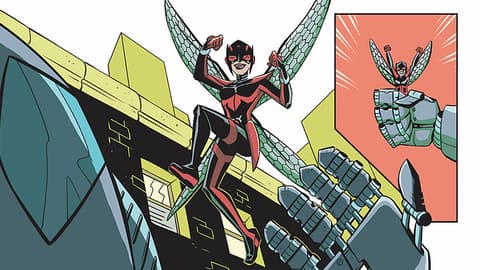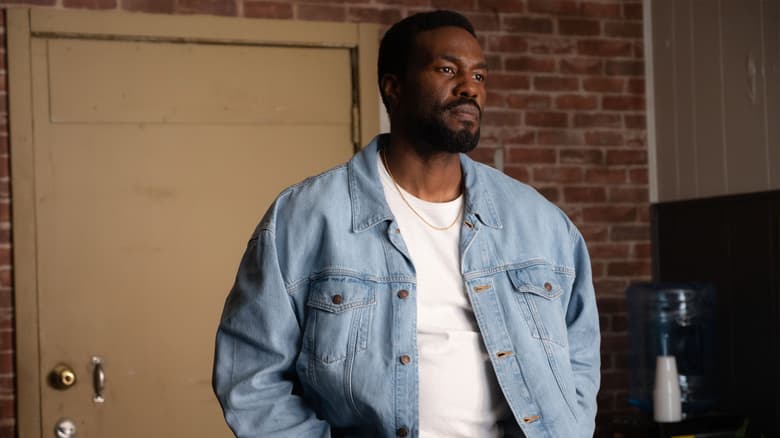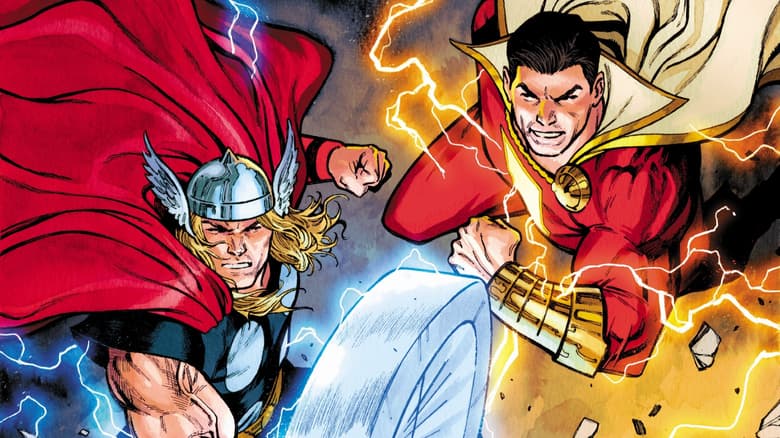Unstoppable Wasp: Meeting of the Minds
Jeremy Whitley and Elsa Charretier recruit real world scientists to back up their new hero!

When Nadia Pym spreads her wings on January 4, 2017 with the release of UNSTOPPABLE WASP #1 by Jeremy Whitley and Elsa Charretier, she’ll be the Marvel Universe’s newest super hero with a big brain to match her abilities—and she won’t be alone.
Each month in the letters page of UNSTOPPABLE WASP, space will be devoted to spotlighting real world female scientists and their work.
“I have to credit our amazing artist Elsa with the original idea,” says Whitley of the profiles. “I had been kicking around that I wanted to do some outreach to STEM and women in science and she came up with an idea. She would draw headshots and we’d do a little profile on female scientists. Her original plan was to post these on Twitter or Tumblr, but ever since I started working on UNSTOPPABLE WASP I’d wanted to do a letters page. I love letters pages and as engaging as Nadia is as a character, I thought it would be perfect. Elsa’s idea of profiling female scientists from our audience was exactly what I was looking for.”
Celebrating science and the innovative minds working towards advancement in various fields fits perfectly with Nadia Pym’s character and the overall feel of UNSTOPPABLE WASP.
“UNSTOPPABLE WASP is all about young female super scientists setting out to change the world,” notes Whitley. “It made perfect sense to us to highlight female scientists who really are shaping our future. We already knew several women who fit this description and were comics readers, so the idea of sharing their awesome work with the rest of our audience seemed like something that had to happen. We look forward to learning about more amazing comics loving lady scientists as we open up to submissions and hopefully a few of [our] younger readers may even find something that interests them as well as the expert that they can ask about it.”
Marvel.com proudly presents a first look at the initial pair of scientific spotlights; for more, check out every issue of UNSTOPPABLE WASP starting with #1 on January 4, 2017!
Hello, you magnificent people! Nadia here to welcome you to our letters page, “Agents of G.I.R.L.”
Why do we call our letters page that, you ask? Well, that’s a really good question! You’re so on top of things! While we love getting letters about how much you love the book (Of course you love the book, I’m delightful!) we are also hard at work recruiting lady adventure scientists for G.I.R.L. (Genius In Action Research Labs). And I may be able to fly, but even I can’t get to every lady genius in the world.
So send us your suggestions for comic-reading, nerdy-birdy science adventure ladies, and we’ll use this space to profile our new members. Elsa even agreed to draw their pictures! Can you believe that? She’s so nice and I love her accent!
But now I’m rambling, so here are our first new recruits: Rachel Silverstein (@irrelephantidae on Twitter) and Marina Chanidou (@MarinaLovesChem)!
What kind of work do you do?

Rachel Silverstein by Elsa Charretier
Rachel: I’m a proboscidean paleontologist, meaning I study extinct elephant fossils. If you were wondering, not all paleontologists study dinosaurs! Of course, they’re cool and all, but ice age megafauna (large mammals) are what do it for me.

Marina Chanidou by Elsa Charretier
Marina: I am a PhD student at a UK university studying Chemistry, specifically Analytical Chemistry. I like to describe this as CSI but it takes longer and you usually don’t get any clear answers! Right now I analyze food samples, but my goal is to apply my method to archaeological remains and test them for residues of different food stuffs.
What excites you about your work?
Rachel: I think most people, professional paleontologists or not, would agree the field of paleontology is inherently exciting. I personally look forward to the collaboration aspect of it. Not all scientists like to work with others, but I prefer to share ideas and findings with my colleagues. Nothing excites me more than getting messages about new fossil elephant findings and the work being done on them.
Marina: This leads to the exciting bit. What I’m trying to do is more accurately identify what people in the past ate! Well, it’s exciting for me, okay? In modern samples I can identify even small adulteration of one type of food to another (for example traces of pork fat somewhere where there shouldn’t be any pork, or cheaper vegetable oils in what is supposed to be virgin olive oil). It would be very cool to do that for archaeological samples as well. (For example, did ancient Britons use olive oil, and if they did, was it imported from Greece or Spain or Italy?) The exciting part is that there is a problem and I’m working out the solution. There is no ready path, I am the one who will choose how I will go about answering this question and I will decide what to do every step of the way. It’s like a puzzle, but you don’t get a picture to tell you what it’s supposed to look like. You don’t even know if the picture is square, rectangular or a circle!
Why would you encourage young women to getting into science?
Rachel: Young women should get into science because they want to! Don’t let anyone tell you you can’t be a scientist, regardless of what science you want to pursue. This is your reminder you can do it. Really. I’ve found female scientists to be the most supportive human beings on the planet. Even if what you do is a hobby, that doesn’t make you less of a scientist. Remember that, ladies!
Marina: Same reason I would encourage them to do anything: if they like it, it seems interesting to them or they are good at it, they should go ahead and do it! I would encourage all young women to take science courses at school anyway for a number of reasons. First of all, it’s really cool and you might like it! But even if you don’t like it, science teaches you a way of thinking. It teaches you that there are problems and there are solutions. And even if you can’t find the solutions now, you’re laying the groundwork for others eventually solving a problem. We are indeed standing on the shoulders of giants, but even a small change puts us higher than we were before. Science teaches you to work, evaluate, adapt and never accept something without evidence–and when the evidence changes, to accept it and change with it.
What female scientists (real or fictional) have inspired you in your work?
Rachel: I have to give a shout out to Dr. Katy Smith, a fellow female proboscidean paleontologist (who also reads comics!), as my inspiration. Dr. Smith has always been there to encourage me to continue my studies to my full potential and give help whenever she can with my work.
Marina: I can’t remember many fictional female scientists from the books I was reading when I was younger. But I did have a female physics teacher in high school and she was brilliant. A brilliant physicist and a brilliant educator. She asked us in class how many of us had taken something apart to see what it looks like and the people who raised their hands were mostly boys and me. She said it is okay for girls to experiment, to mess with things, to fix things and find out how things work. One day she was telling some of us a story about how she was running an experiment in the lab and it took more than 24 hours and she had to stay there and make sure everything was going well. Her boyfriend at the time was not impressed. She said “Sometimes men don’t understand that I will forget about a date if I’m in the lab.” That’s when I thought, “What’s not to understand? Of course the experiment was more important than the date! You can have a date any time, science is more important.” I was hooked!
Do you have a favorite example of clever/unusual/or nonsensical use of science in comics?
Rachel: As a paleontologist, I always thought the concept of the villain Dinosaur Man was hilarious. He reminds me of everything that went wrong in Jurassic Park, but in comic book-form!
Marina: Most science reads like magic in comics and I need to really suspend disbelief to follow it. That is one thing that I would love to be improved. One that I do enjoy very much and is surprisingly quite a realistic depiction of a scientist’s life is Blood Stain by Linda Sejic.
How long have you been reading comics? What was your first comic book?
Rachel: I’ve been reading comics since I was 12. I remember bringing them with me to class in middle school and trying to hide while reading them. I would read Marvel, DC, indie–anything really. My first Marvel comic I got into at a young age was Spider-Man.
Marina: I started reading comics when I was around six. My first books were Asterix the Gaul and Lucky Luke. Then I read a lot of Disney Comics, Carl Barks was a favorite creator. Finally, when I was 17, I went to an actual comic book shop. And picked up Medieval Lady Death! Sure, she was semi-naked, but she was a woman kicking ass in a world that wanted her gone!
Please send all of your suggestions for girl, lady, or lady-identifying geniuses to us at MHEROES@MARVEL.COM and mark your letters “Okay to Print”! You can also tweet at us using the hashtag #AgentsOfGIRL! Come back next month to meet more amazing science ladies!
The Daily Bugle
Can’t-miss news and updates from across the Marvel Universe!




